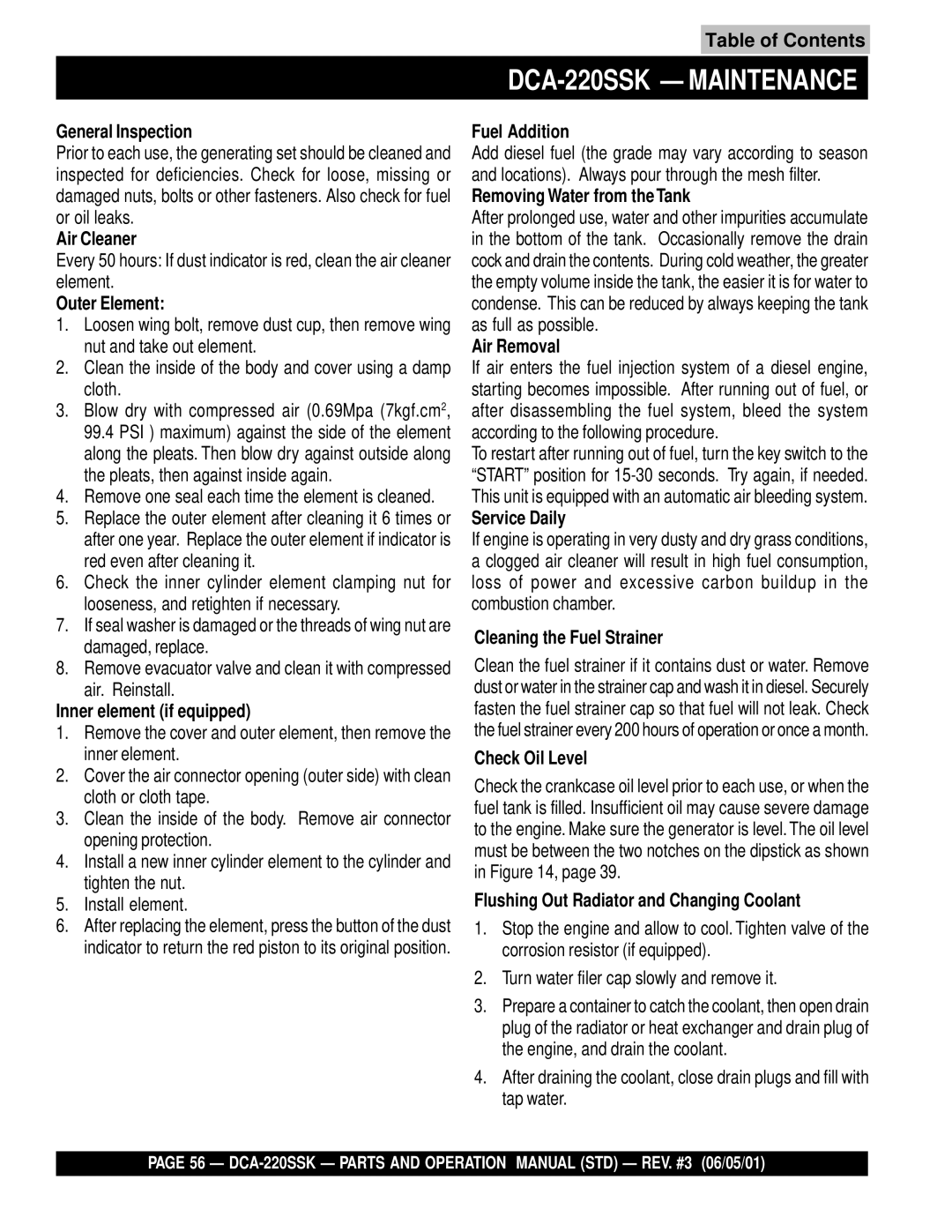DCA-220SSK specifications
The Multiquip DCA-220SSK is a robust and versatile generator designed to meet the diverse demands of construction sites, rental facilities, and emergency backup needs. This generator stands out with its ability to deliver reliable power in a compact and easy-to-transport package.At the heart of the DCA-220SSK is a powerful water-cooled, 4-cylinder diesel engine that provides a rated output of 220 kVA. This engine is coupled with a heavy-duty alternator that ensures an efficient and stable power supply, making it suitable for a wide range of applications. The generator features a sound-attenuated enclosure, designed to minimize noise levels and enhance mobility. This encasement not only protects the inner components from harsh environmental conditions but also complies with strict noise regulations, making it a great choice for urban job sites.
One of the key features of the DCA-220SSK is its advanced digital control panel, which offers intuitive monitoring and management of the generator's operation. This panel allows users to easily track essential performance metrics such as voltage, frequency, and hour count, ensuring optimal functionality. Furthermore, it is equipped with several safety features, including low oil pressure and high temperature shutdowns, which protect the unit from damage and extend its lifecycle.
In terms of fuel efficiency, the DCA-220SSK is designed to operate at a low fuel consumption rate, making it cost-effective for long-term use. Additionally, its large fuel tank provides extended runtime, enhancing productivity by reducing the frequency of refueling.
The generator's compact design is complemented by heavy-duty wheels and lifting points, facilitating ease of transportation and deployment in various job settings. This rugged design is ideally suited for construction, industrial use, and other commercial applications, where reliability and performance are paramount.
Ultimately, the Multiquip DCA-220SSK delivers high-quality power with its innovative technology and features that cater to the needs of end users seeking durability, efficiency, and reliability in their power solutions. Whether for temporary power at a construction site or as a dependable backup during emergencies, this generator is a commendable choice in the competitive landscape of commercial power equipment.

